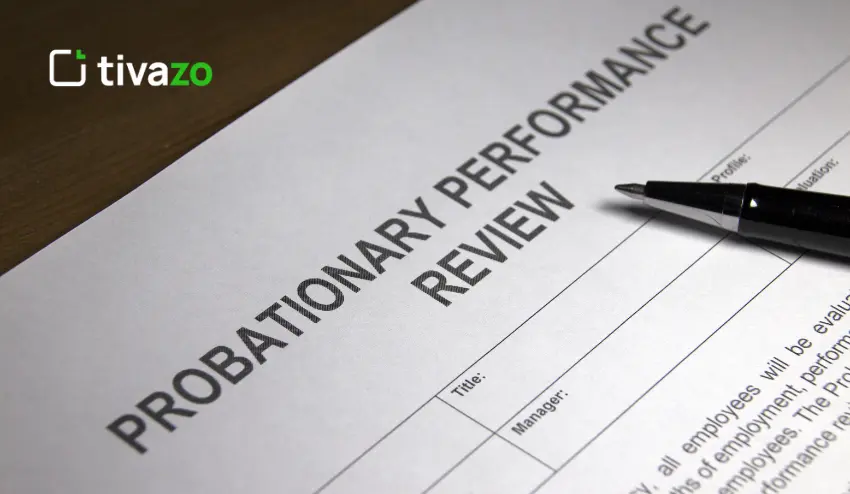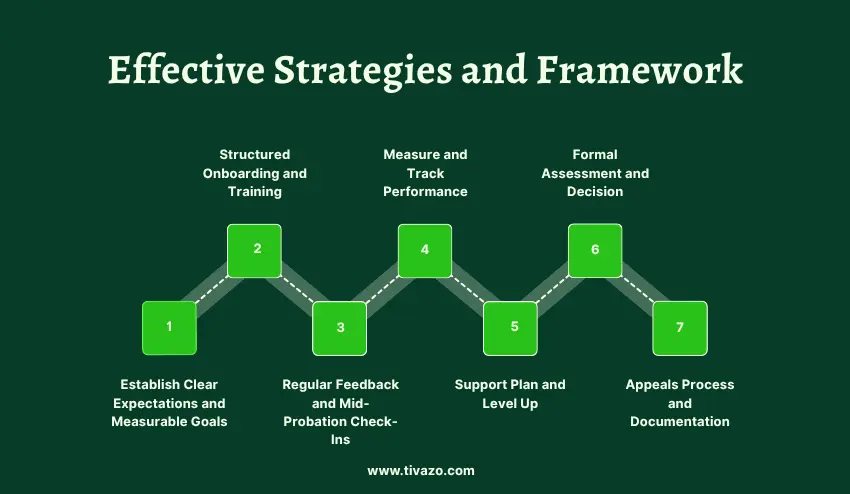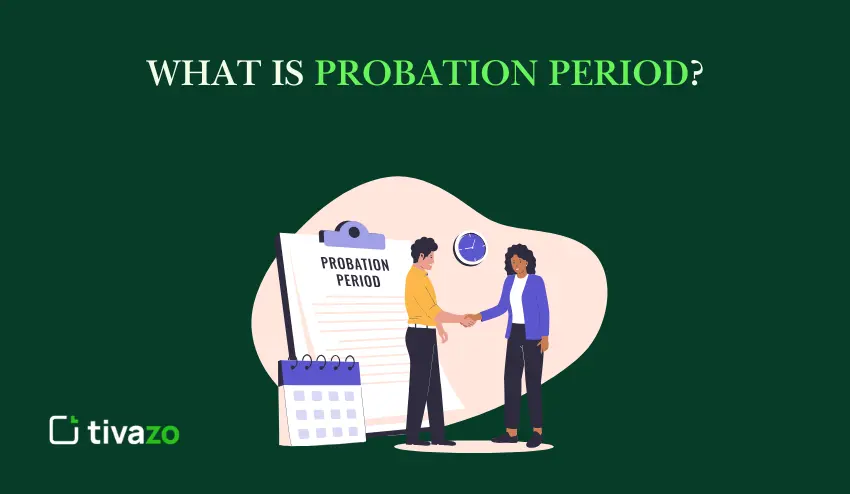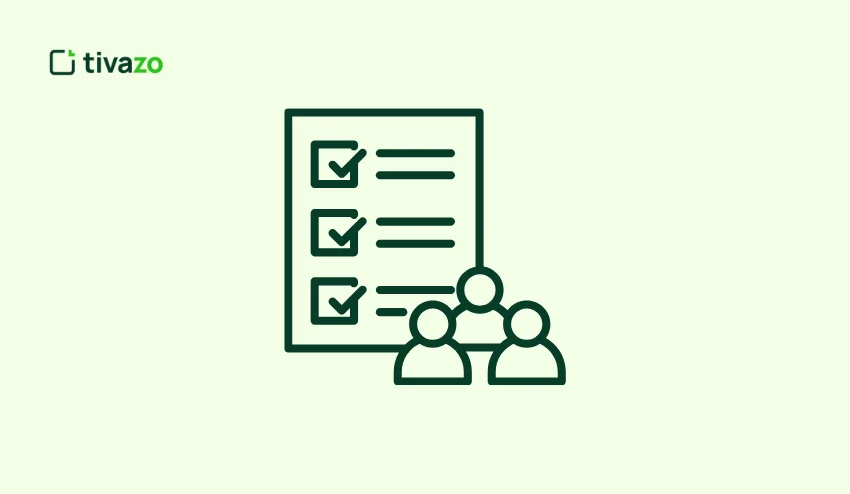The probation period at work is one of the most misinterpreted periods of employment. For many people, the term “probation” means “risk,” “pressure,” or “uncertainty.” In reality, it’s a very useful opportunity for both employer and employee to ensure the role, the expectations, and the culture of the organization are a good fit.
If you are embarking on a new role or managing new employees, knowing how the probation period works will save you time, stress, and expensive mishaps. The probation period is one of the key indicators of future success in the workplace, allowing the employer to evaluate performance and the employee to demonstrate their skills in a successful and planned way.
In this complete guide, you will learn what a probation period is, why it matters, how long it usually lasts, and what your rights are. You will also find practical frameworks to ensure you pass your probation with ease, real-life case studies, and ready-to-use templates for planning, engaging, and ensuring success from a manager and employee perspective.
What is a probationary period?

A probationary period is the initial trial period new employees experience during employment. A probationary period provides both the employer and employee with an opportunity to determine if the position is suitable.
The probationary period is usually between one and six months. During this time, the employee’s performance, behavior, and ability to meet organizational standards are closely monitored. The probationary period serves both parties together as it is a trial period for both the employer assesses whether you are well-suited for the job, while you evaluate whether the organization’s culture and expectations of work align with your own.
Probation periods have their roots historically as a protection to an employer hiring permanent employees, and testing without putting obligations on the employee. Today, virtually every organization utilizes some version of a probationary period, from a startup to a corporation. The probationary period also helps to mitigate the number of mistakes when hiring the wrong person for the job. It provides a structured way for managers to give employees feedback early about their performance.
In essence, the probationary period helps to bridge the gap between the hiring stage and a permanent status of employment. A probationary period is a short-term agreement to lead to long-term successes.
The Importance of the Probationary Period
The probation period may seem like a mere formality, but it is an important process in establishing the future of employment relationships. For employers, it provides a layer of protection, and for employees, it offers opportunity to prove oneself and obtain long-term security.
For Employers: Assessing Fit for the Position
Mistakes in hiring can be costly. The probation period gives employers an opportunity to confirm that a new hire has the appropriate skills, work ethic, and attitude before securing a permanent position. The probationary period enables the team to observe the new employee and how well they fit in with the team culture, and how well they carry out their responsibilities.
From a business perspective, the most beneficial aspects of the probation period of employment are:
1. A reduction in the costs of turnover by early identification of mismatches.
2. The ability of managers to make final employment decisions based on data rather than anecdote.
3. Evidence of working within HR policy that could limit or negate benefits until the employee is confirmed as a permanent employee.
Typically, this period is spent developing measurable goals – productivity, attendance, communication skills, etc. – that are recorded as evidence prior to a final employment decision.
For Employees: Proving Not Just Their Value but Also Their Trustworthiness
For employees, it is a time period to prove their merit. To prove their reliability. To show teamwork within the department or across groups. To show alignment with company values. Employees who frame the probation period with intention can leverage this window of time to earn trust, sharpen skills, and establish their possibilities for advancement.
To successfully confirm the probation period is also a great boost to that employee’s confidence and opens the doors for job security, eligibility for benefits, upward mobility, etc. The employee, who may have viewed it as a temporary opportunity, may come to think of it as a solid job opportunity.
In summary, probation is a time to test the partnership. Employers establish fit. Employees establish their future.
Common Lengths & Types of Probation
The length and types of probation period vary based on the organization, industry, and country of employment. Having some idea about your country’s customs and norms is helpful, as it allows employees to set realistic objectives and also gives employers an idea of how to develop reasonable and fair assessment processes.
Common Lengths:
The majority of probation periods can average between 30 days and 6 months, although some can last for up to a year in particular positions. In most retail, hospitality, and general entry-level employment, a short period of 1-3 months is common. Professional or technical employment may use a longer notice period for a full assessment of skills.
| Typical Duration | Common Roles / Notes |
|---|---|
| 30–60 days | Retail, customer service, entry-level jobs |
| 90 days | Office roles, administrative positions |
| 3–6 months | Professional, technical, or managerial positions |
| Up to 12 months | Specialized or highly regulated roles (finance, healthcare) |
Probation Lengths & Types Explained
The length of the probation period can differ from company to company, industry to industry, and country to country.
Jurisdictional Differences
Probation rules may also be different based on the region or country.
- United States: The majority of states are “at-will employment” states, meaning probation does not impact firing rights. Montana is the exception with additional requirements for notice.
- United Kingdom: Probation is typically 3-6 months; employees will obtain a few rights, e.g., employee has to be employed for a qualifying period to be eligible for maternity leave.
- Canada & Australia: Often use similar 3-6 month probation periods, but the laws are different by province/state regarding notice periods and termination rights.
Because organizations can use different types of probation depending on the type of role we will also define those next:
- Newly Started Hire Probation: The standard, commonly used trial for new employees.
- Internal Promotion Probation: For an existing employee who is merit-promoted to a higher-level role.
- Performance Probation: For an existing employee who needs to improve after performance issues with confirmation of follow-up.
Understanding the length and type of probation is important for both employees and managers when establishing the appropriate goals for performance tracking as well as facilitating regular check-ins for the purpose of a fair evaluation process. It is also important that employees understand the differences to allow for realistic expectations and their employer to be able to design an appropriate and fair evaluation process.
Knowing Your Rights and Legal Protections During a Probationary Period
Though probation is considered a trial period, you do have rights. Understanding that there are some protections will help you determine what your employer can and cannot do during the probation period.
Can you get fired during a probation period?
Yes, in most situations, the employer can terminate employment during the probationary period. However, the employer cannot terminate because of discrimination based on age, gender, race, religion, or disability. ‘At will’ employment in the U.S. means that an employer may terminate you with or without cause; however, there are some states (like Montana) that require the employer to give you notice or good cause after the probation period.
Notice Periods
Some companies may have a short period of notice (1-2 weeks) even during probation. Some companies may allow for an immediate termination depending on the the contract and local laws. If you are uncertain, check the contract for clauses.
Benefits
The probationary period may have some effect on your benefits, like, but not limited to, health insurance, contributions to your retirement account, and paid leave. Many companies delay various benefits until the employee has successfully passed the probationary period. Understand the company’s policies first so that you’re not caught off guard.
Documentation and Appeals
Document discussions about performance, including emails and reviews, throughout the probation period. This documentation may assist in case of a dispute or an appeal. Some companies formally provide the employee the opportunity to challenge a dismissal during the probation period; however, an employee’s rights may differ by state or province.
Knowing your rights during a probation period is essential to ensure you have peace of mind, as well as for your professional future planning. Having this knowledge will help you know where you stand and/or what to do should issues arise.
Models of Probation Periods and Options
Not all conditional employment periods are created equal. Employers develop conditional employment periods differently, depending on the role, the needs of the organization, and the purposes being served in or by the role. Knowing the various models can give employees advanced notice of what to expect. It can also help a manager to build an equitable and consistent system of evaluation.
Models of Probation Periods
- New Hire Conditional Employment
The most traditional model, sometimes called simply “probation,” and applied to individuals who begin working in a new role. With this model, both the employer and employee address their mutual goals for performance expectations and cultural fit. - Internal Promotion Conditional Employment
When an employee has been promoted or moved to a new positional role within the organization, a conditional employment period may be applied. This model allows the employer to evaluate whether the employee can demonstrate the skills necessary for success in the new role, and to develop plans for addressing skill gaps and expectations. - Performance Conditional Employment
A conditional employment model is applied when employee performance is less than expected. When using this conditional employment model, overall expectations are established along with specific goals and timelines for achieving those goals, in an effort to provide the employment opportunity for improvement before any permanent decision is made.
Alternatives to Traditional Probation
Some organizations would like to have more options for alternatives to the traditional probationary period:
- Extended onboarding – More of a training focus during this period that includes frequent feedback just not formal probationary period.
- Trial or Temporary Contracts – Employment for a short period of time, being evaluated to determine if employment will continue or other offers will be made.
- Conditional Offers – Work may be offered to a candidate based upon their meeting certain conditions, e.g., passing an exam or obtaining certification.
- Temp-to-Perm Models – Temporary employees may be able to become permanent after completing a successful trial of employment.
Each option has advantages and disadvantages. Traditional probation happens because it is a very formalized way of evaluating a new employee. Alternative option approaches may not feel as stressful for the employee, but will require an intentional effort to keep communication clear with the new employee, while also being structured and meaningful in feedback.
Effective Strategies and Framework to Pass (or Manage) a Probationary Period
Planning, communication, and performance are essential to effectively managing a probationary period. Whether you are an employee or a manager, having a consistent framework can provide a more efficient and less stressful process.

Step 1 – Establish Clear Expectations and Measurable Goals
At probation’s outset, it is important to define your role, responsibilities, and goals. An employee should inquire about key performance indicators (KPIs) or deliverables. A manager should be clear and transparent while documenting expectations.
Tip: A successful strategy is a 30-60-90 Day Plan, which will help the employee break the expectations down into short-term, medium-term, and long-term goals.
Step 2 – Structured Onboarding and Training
A well established onboarding program can provide the employee with a good understanding of processes, systems and culture in a short time span. Encouraging your employee to have a solid understanding of those components will be beneficial. That onboarding can also include role-specific training or required onboarding items for those aspects as well as assigning a mentor to assist the employee in their onboarding journey.
Step 3 – Regular Feedback and Mid-Probation Check-Ins
Employees should proactively seek value-added feedback, while managers should consider scheduling a check-in at the mid-point of the probationary window. The documentation of performance either way is essential in case when checking in on progression and addressing issues, if established early on, rather than waiting until the end of probation (which often surprises employees).
Step 4 – Measure and Track Performance
Three key metrics should be tracked.
- Fit – Team communication, team interactions and adaptability.
These metrics will provide both employee and management the ability to have an objective data measure. - Productivity – tasks accomplished and are on track for completion.
- Quality – work accuracy/attention to detail.
Step 5 — Support Plan and Level Up
When any performance gaps are identified, it’s a good idea to create a transparent support plan. Identify possible mentors, outline potential resources, and schedule meetings to keep the employee working towards improvement.
Step 6 — Formal Assessment and Decision
At the conclusion of the probation period, conduct the formal assessment. Decide if the employee will have their employment confirmed, prolonged, or terminated. Share relevant feedback and next steps.
Step 7 — Appeals Process and Documentation
Employees should have a clear understanding of where to appeal the decision or ask clarifying questions. Documentation should be kept by managers so that there is a paper trail and transparency in the process.
Common Mistakes and How to Avoid Them
- No documented goals or KPIs → Set measurable objectives at the start
- Leaving probation unclear in the contract → Include start/end dates, notice periods, and expectations
- Lack of feedback during probation → Schedule regular check-ins with constructive guidance
- Ignoring cultural fit → Observe behavior, teamwork, and communication throughout probation
- Extending probation without reason → Only extend when gaps are documented and communicate expectations
- Overlooking legal requirements → Understand local laws, notice periods, and employee rights
- Delayed or inconsistent evaluations → Conduct regular evaluations and document progress
- No exit or success plan → Define and communicate what happens after probation
Conclusion
The probation period is a very important part of the employment experience. It allows employees to display their abilities, flexibility and cultural fit for the job so the employer may assess performance and make an informed judgment. Knowing the rationale for probation, the types, legislation, and best practices will allow both parties to successfully maneuver through this period.
Employees can enhance their possibility of passing probation by establishing goals, seeking input, tracking their progress and/or using tools or checklists to structure their plan. Employers can benefit from reduced turnover, aligning a performing workforce to the organization, and having a structured process to evaluate employees.
If you are an employee who wants to keep a permanent job or a manager who is required to evaluate probation, you must make the probation an engaged period of time that has terms of references, clarity and mutual accountability. Think of the probation period not as an adversarial episode, but rather a team activity, short-lived, that leads to a longer term effort.




